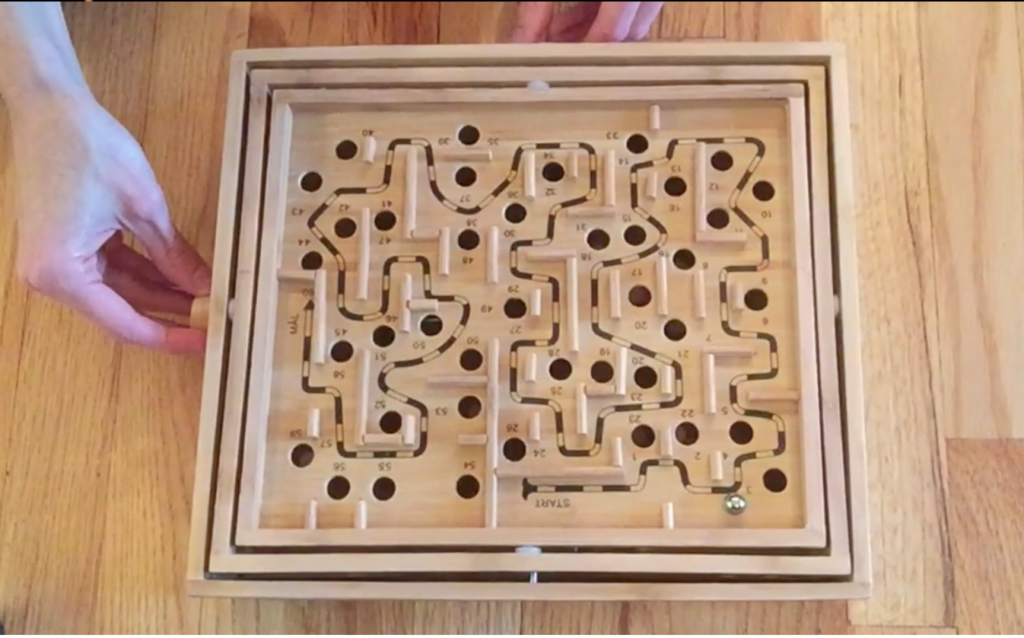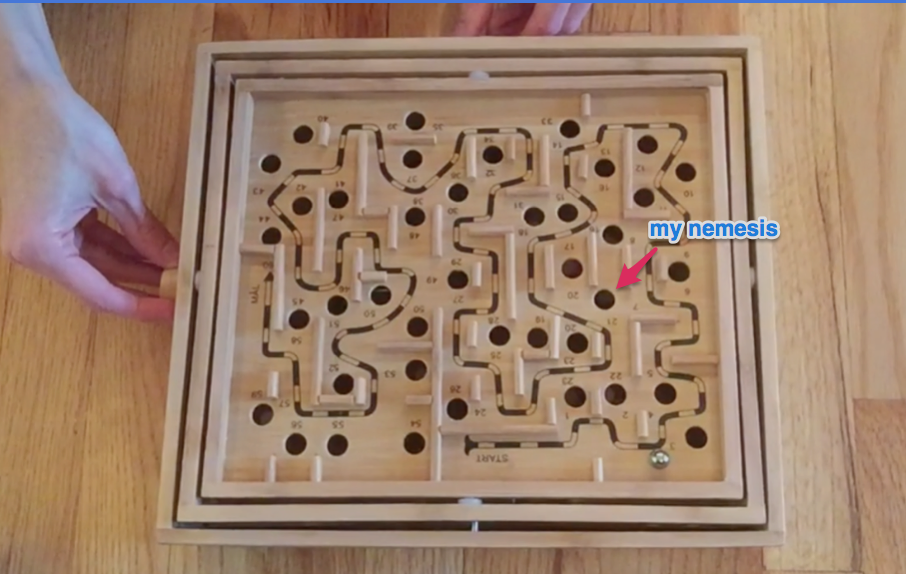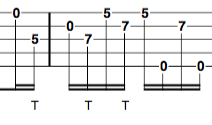The Laws of Brainjo, Episode 13
The “Labyrinth” Practice Technique
(click here for Episode 14: The Secret to Playing Faster)
I’m going to share with you a practice technique that I use all of the time. It’s a technique I find indispensable, one that can literally shorten your practice time by 500% or more.
And so if you’re not familiar with it, or not using it, then that needs to change pronto!
But first I’ll tell you a story.
Family-Friendly Competition
My son recently had a birthday, and one of the gifts he received was the game “Labyrinth.”
Labyrinth is an actual, physical game, one you can touch and feel and exists entirely in the analog realm of real life. A refreshing departure from the land of ones and zeroes that little boys spend much of their time in these days.
You may have seen or played it. It consists of a movable wooden board mounted inside of a box. On the board is a maze, and your job is to navigate a metal ball through the maze, using two rotating knobs that adjust the pitch of the board, without it falling into any of the many holes in its way.
THE LABYRINTH GAME

My son soon became obsessed with it, playing one round after another, getting better with each repetition. And then he put down a challenge: “Dad, see if you can break my record.”
Challenge accepted.
I got to work. Initially, my progress was swift. I’m going to break his record in no time, I thought.
Not so fast.
I’d reached the same little section of maze my son had yet to successfully move through, and couldn’t get past it, despite multiple attempts. Each time, I’d put my ball at the starting point, meticulously guide it through the initial sections, only to have it repeatedly fall each time into the same hole in the maze.

And each time that little section of maze defeated me my frustration grew, as I’d have to repeat the tedious task of starting back at the beginning, then carefully navigate through the parts I’d already mastered just so I could try my hand at that one section I’d yet to conquer.
And then I had what at the time I thought was a revelation.
Why don’t I just place the ball at the start of the section that I can’t get past, and just work on that one spot until I master it?
That’s just what I did. With my enthusiasm renewed, after about six or seven attempts on just that one section, I learned the required maneuvers of the knobs and could consistently make it through. All that was left was to do was set my marble back to the beginning, proceed to the section I had now mastered, and break my now….ahem…8 year old son’s record!
Now, I was patting myself on the back for discovering this little shortcut for getting better at the game — which in retrospect seemed kind of an obvious thing to do — when it occurred to me that I do this exact same thing when practicing the banjo ALL THE TIME. It’s a technique that I’d been thinking was probably an obvious one, but this little experience with the Labyrinth game made me realize that may not be the case at all.
So now I’ll demonstrate the “Labyrinth Practice Technique” applied to the banjo with a specific example.
How To Use The Labyrinth Practice Technique
Step 1: Identify the difficult spot in the tune.
A few weeks ago I released the tune “Sailor’s Hornpipe” as part of the Clawhammer Tune of the Week series. I chose this tune in part to pay tribute to the memory of 3-finger banjoist extraordinaire Bill Keith, who had recently passed away.
Bill Keith is known as a pioneer of the “melodic” style of 3-finger playing, so I wanted to include in my arrangement some nods to his playing style. One such nod occurs at the end of the 1st measure and extending into the 2nd. It’s the kind of picking pattern Bill used often, but not one that I’m all that accustomed to playing.
And I noticed that, as I was working up my arrangement, I was consistently tripping up on that particular spot. It was clearly my weakest link in the entire arrangement, just like the one section in the Labyrinth I couldn’t get past.
So, rather than play through the entire tune over and over again, the bulk of which I could play just fine, I instead focused my energies on ONLY that section, and got to work on applying the Labyrinth Practice Technique to this particular arrangement.
So here’s what that particular section I’d isolated out looked like in tab:

As an aside, one of the signature elements of Keith’s melodic style is the use of melodic licks in which a note that’s higher in pitch is found on a string tuned to a lower pitch (for example, the 2nd note in the 2nd measure above is higher in pitch than the 1st note in the measure, even though it’s played on a string that’s tuned to a lower pitch). If you’ve been playing stringed instruments for any length of time, your brain has learned to expect the opposite, and will resist you trying to do so. In order to play through a section that violates this rule, then, you’ll need to unlearn that resistance.
Step 2: Play the difficult section along with a timekeeping device, SLOWLY.
The next thing I did was open up a metronome, and to find the tempo setting where I could actually play through this section cleanly and with good timing. This turned out to be 60 bpm, roughly half of the final “performance” tempo (you could also use a backing track for this sort of thing, provided you have the ability to adjust the tempo).
Step 3: Gradually increase the tempo of the timekeeping device until you reach performance speed.
Once I could consistently play through the section at that initial tempo, I increased the speed a bit, working on it again at that tempo until I could play through it consistently. I repeated this process until I reached performance tempo.
Once I’d done so, I knew I could now confidently play through the entire arrangement.
Practicing Smarter, Not Harder
There’s no telling how long it would’ve taken me to beat that tricky section in the Labyrinth game had I painstakingly taken my marble back to start of the maze each and every time it tripped me up.
Like I said, all of the maze prior to that point I could make it through just fine. Had I continued in this manner, I’d have been spending the bulk of my practice time rehearsing something I already knew how to do. Doing it this way, I was only spending a fraction of my practice time working on the thing I actually needed to learn.
Worse yet, the fact that I had to start over each time and navigate through the sections I’d already learned made each failed attempt all the more frustrating. That frustration undoubtedly worsened my concentration and performance, further reducing my practice efficiency.
So I encourage you to use this technique liberally to your advantage, particularly when encountering a challenging section of a new tune or song. Resist the temptation to avoid those parts that you find most challenging. And resist the temptation to rush through them, as you’ll only end up reinforcing bad habits.
Use the “Labyrinth Technique” instead, and I think you’ll be pleasantly surprised by the speed of your progress.
You’ve likely heard me say this before, but this is yet another illustration of the principle that HOW we practice is as (or more) vital to our success as WHAT we practice.. If you were to take two people of equal skill and have them try to learn the same piece of music or navigate through the labyrinth maze, and only one had access to this practice technique, I know who I’d bet on to learn it first.
Brainjo Law #15: When encountering challenging sections of a new tune, use the “Labyrinth technique” to improve practice efficiency.
Back to the “Laws of Brainjo” Table of Contents
